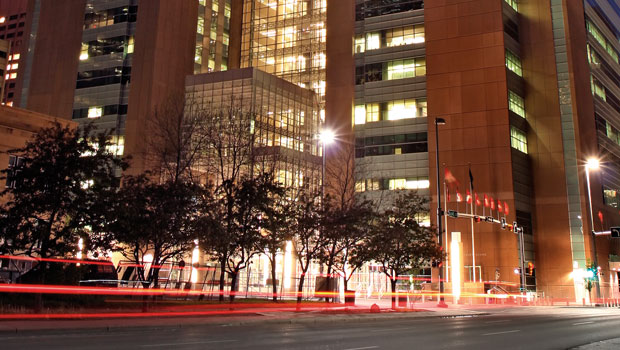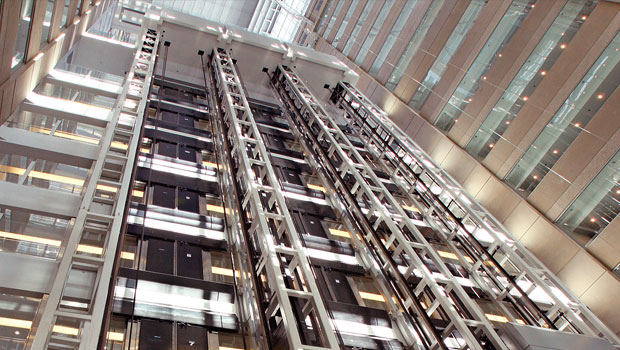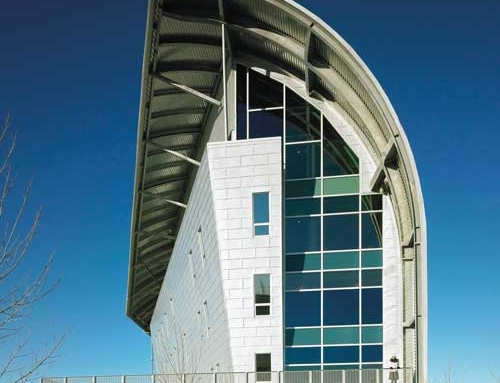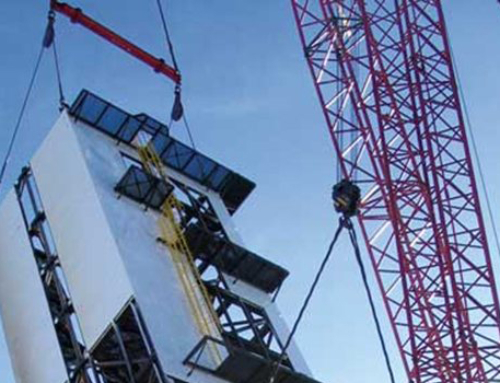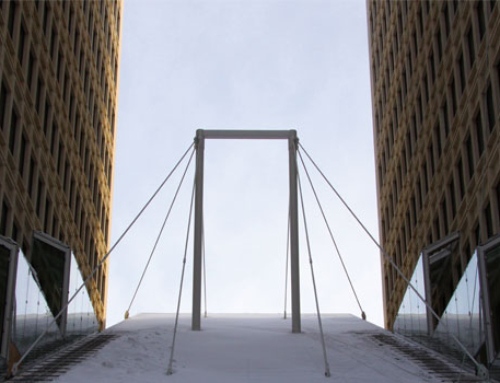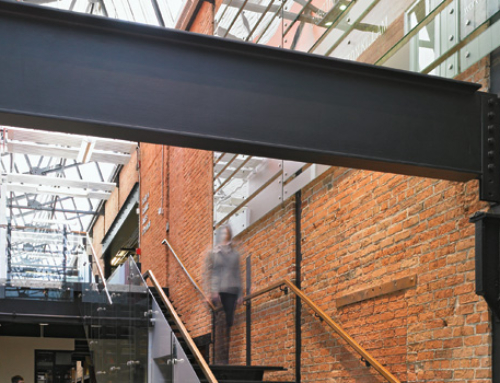Project Description
The central glass atrium of the new Calgary Courts Centre is an architectural metaphor for the concept that justice must be transparent to all. It also connects two reinforced concrete towers via a system of structural steel bridges and trusses in an engineering feat that could be a first in North America.
“The function of the building meant we had to incorporate for security purposes three separate vertical circulation systems – for judges, prisoners and the public,” says Fabrizio Carinelli, Vice President with CANA Management Ltd. general contractor on the project. “The design build team envisioned the public area inside a clear glass atrium to represent the transparency of justice. To make it work in the most cost effective way possible, steel was the most flexible choice.”
The 27-storey glass and steel atrium connects two concrete towers – 21 stories tall and 25 stories tall. “The height of the atrium was a big challenge,” says engineer Pang Ng, of Stantec. “It was the first complex of its kind of this size in Western Canada, if not in North America.“
“The challenge is that the atrium roof rises eight or nine metres above the towers, almost like a head on top. Because the two towers move differently – at different speeds and magnitudes up to as much as six to ten inches – we had to build in tolerances both for wind and earthquake activity.”
The atrium walls – essentially full-height curtain walls at the east and west ends of the complex – were another challenge. “If the buildings move differently, the curtain wall might have a problem,” Ng says.
To ensure the buildings move as a single structure, they are tied together at each floor by a series of three dimensional structural steel trusses that support the weight of the curtain wall and also take lateral forces into account. “This ensures that the dimensions between the two buildings won’t change and the curtain wall will be sound in all conditions,” Ng says.
The towers were also tied together on the interior by a series of structural steel walkway bridges. Structural steel horizontal cross bracing at the 20th level further limits relative east-west movement between the towers.
Construction presented other “daunting challenges,” Carinelli says. The site was only accessible on two sides and only two tower cranes were permitted. “We had all the structural steel elements pre-fabricated and assembled as much as possible off-site. In the case of the bridge spans, all we had to do was set them in place between the towers.”
As construction spread over two winters, weather created another challenge because steel and concrete react differently to environmental conditions. “That meant we couldn’t make final connections until the structure was closed in,” Carinelli says. To accommodate this, each bridge and atrium wall truss was welded in place only at one end and a temporary sliding connection was used at the other end until the structure could be enclosed.
“It took a full team effort – between the builders, fabricators, engineers, and architects – to achieve this,” Ng adds.
Project Team
Owner: Government of Alberta
Architect: Kasian Architects
Structural Engineer: Stantec Consulting Ltd.
Project Manager / General Contractor: CANA Management Ltd
Fabricator: Triangle Steel Ltd.

